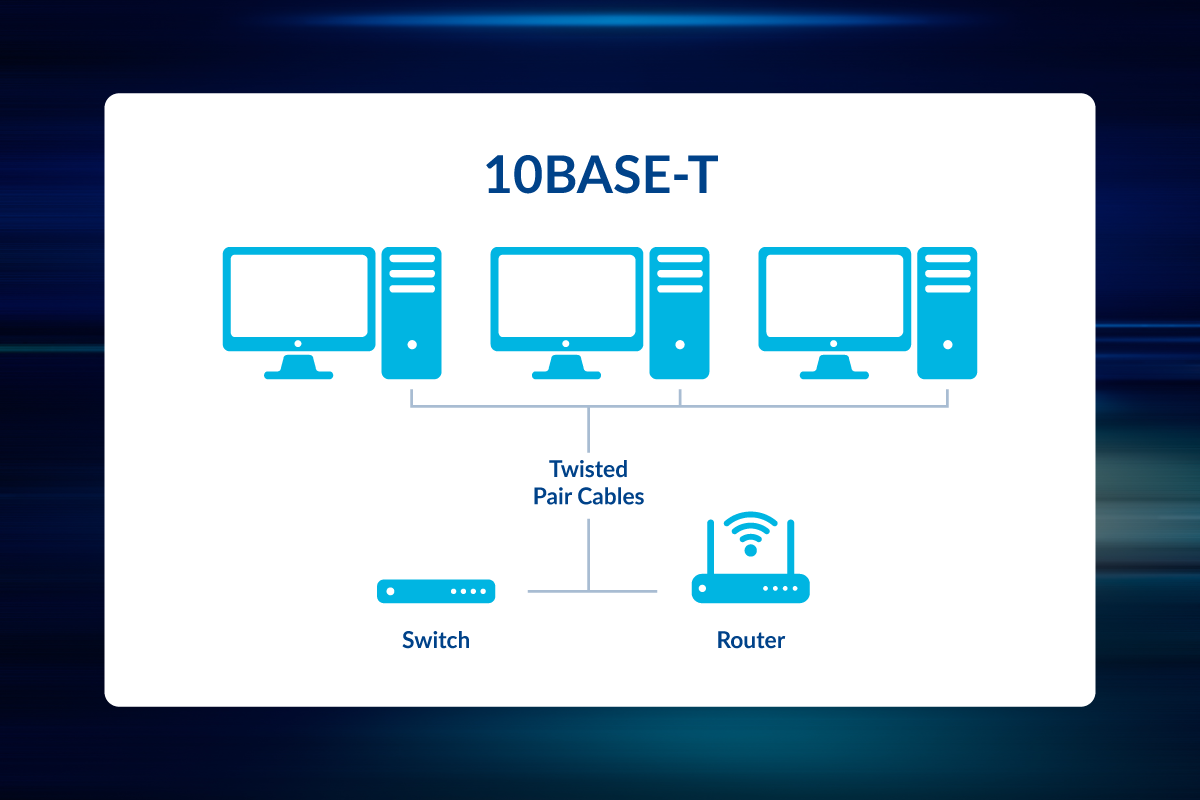Wi-Fi, 5G and the Cabling Infrastructure
Those of us who have been around the copper cabling telecommunications industry for a long while are familiar with the question, 'Will this new technology mean the end of copper cabling?'
First optical fibre cabling was the threat, and now emerging technologies such as Wi-Fi 7, currently under development as the IEEE P802.11be Enhancements for Extremely High Throughput (EHT) amendment project, are questioned as possible successors to balanced twisted pair cabling.
The Need For Speed?
Current estimates, driven by the exponential demand for throughput in support of a range of applications, including remote working and conferencing, industry 4.0, IoT, and 4K and 8K video streaming, to name a few, have resulted in the need for the specification of high-performance network cabling to supporting access layer switches and uplink connections.
Furthermore, TIA TSB-184-A recommends Category 6A to support emerging Power over Ethernet (PoE) applications. Higher-current PoE capability brings important cabling and connectivity considerations to the forefront of design planning. Therefore, Category 6A is recommended for all new installations.
Most industry cabling experts also recommend a minimum of a 25-Gbit/sec-capable fibre backbone infrastructure to support the increased traffic and higher speeds that come with Wi-Fi 6 and 6E and more connected devices. It's important to consider that while Wi-Fi APs are often refreshed every 3 to 5 years, the underlying cabling infrastructure should have a lifecycle of 10 to 15 years. It is, therefore, vital to follow industry standards and best practices when designing and deploying the infrastructure.
In preparation for these higher speeds, international telecommunications standards specify or recommend deploying Category 6A cabling. Only Category 6A cabling provides guaranteed support of 10GBASE-T over all installation environments and channel topologies up to 100 meters. Additionally, shielded cables include support for remote power delivery (PoE) applications.
Wi-Fi
Whilst existing cabling infrastructure will support with a single Category 6A connection the 1.3-Gbit/ sec speed for Wi-Fi 5, industry standards and guidelines all now specify or recommend keeping the higher throughput capabilities of Wi-Fi 6 and 6E by deploying two Category 6A cabling runs to each Wireless Access Point (WAP); This is the only way to effectively achieve redundancy and support the 5-Gbit/sec throughput of Wi-Fi 6 while also supporting the potential higher speed of Wi-Fi 6E.
With the forthcoming Wi-Fi 7 specifications capabilities to handle even higher Throughput Wireless LANs, this has also added to this comment on whether wireless networks will make wired networks obsolete. As with previous Wi Fi implementations, Wi-Fi 7 will have both a theoretical maximum (46.1 Gb/s upstream and downstream combined) and a "real world" (> 20 Gb/s upstream and downstream combined) throughput. Based on this impressive bandwidth, it's tempting to think that IEEE 802.11be devices might support transmission speeds on par with structured cabling systems. However, there are two main reasons why this won't be the case:
As wireless is a shared media, the maximum available real-world bandwidth is split between multiple users. Considering that one access point will likely serve 30-60 clients, the network will slow due to a lack of bandwidth depending on client needs at any given time; This is in significant contrast to a 10GBASE-T network, where each device always has a total 10Gb/s bandwidth available.
Total bandwidth is specified differently for wired versus wireless systems. For example, since 10GBASE-T transmits in full-duplex (sending and receiving over the same cable pairs simultaneously), it operates at a maximum rate of 10 Gb/s upstream and 10 Gb/s downstream; This is different from wireless networks, which transmit in half-duplex and whose stated bandwidth indicates throughput in both directions combined. In reality, what this means the actual bandwidth will depend on the number of users and devices on the Wi-Fi networks.
Secondly, the other major shortcoming of an all-wireless data network is the high likelihood of periodic network slowdown and saturation due to the number of clients and applications in use.
Therefore, devices will need to be connected to a dedicated (i.e., there are limited or no other clients on the wireless network) 802.3be access point. Transmission speed will be different from a 10GBASE-T structured cabling network.

Given that market statistics show enterprise networks' daily internet growth for both commercial and social usage means, more than ever, it is essential that connectivity remains consistent and meets the end user's demands. Even though new standards are being developed for wireless systems, the truth is that the radio spectrum needs more available space, with little to no room to grow. The increasing demand for Wi-Fi connectivity is driving the installation of more access points. Still, these generally have reduced coverage, slower data throughput and less stable connection – all of which will lead to frustration amongst connected users.
Wireless Versus Wired
The major shortcoming of all wireless data networks has always been the high likelihood of periodic network slowdown and saturation due to the number of clients and applications in use. The bottom line is that unless a device is connected to a dedicated IEEE 802.3be access point, transmission speed won't even be comparable to a 1000BASE-T structured cabling network. Market statistics show that enterprises are finally migrating to 10GBASE-T in the work area, and the costs of higher-performing and higher-cost Wi-Fi access points will continue to climb.
